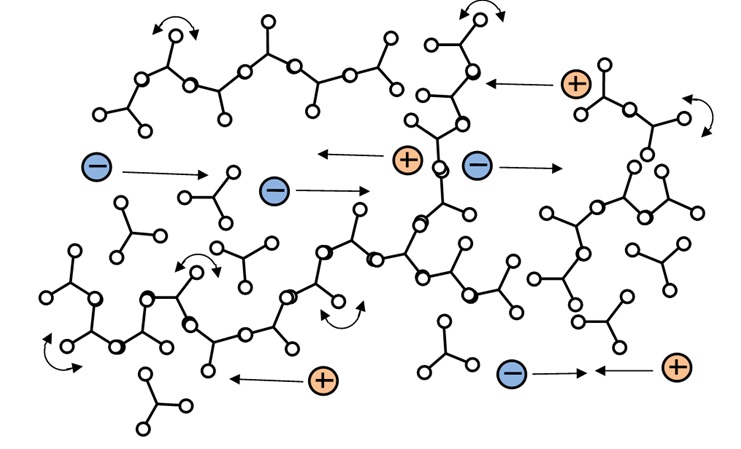ION VISCOSITY IN thermoset and composite cure monitoring
Dielectric cure monitoring, also known as DEA, measures a polymer’s resistivity and permittivity, which are the thermoset’s dielectric properties. In general, resistivity provides the most useful information about composite cure state. Resistivity itself has a frequency independent component due to the flow of mobile ions and a frequency dependent component due to the rotation of stationary dipoles.
The term ion viscosity (IV) was coined in the early 1980’s as a synonym for frequency independent resistivity. Why? Because frequency independent resistivity is determined by ionic mobility, and the state of a material’s polymer chains or networks affects both ionic mobility and mechanical resistance to flow. Consequently, ion viscosity often differs from mechanical viscosity by only a scaling factor and is a useful probe of the cure state of epoxies, polyurethanes, polystyrenes, bulk molding compounds (BMC), sheet molding compounds (SMC) and other thermosets.
Thermoset at gelation: beginning of crosslinking and network formation during thermoset or composite cure
During thermoset or composite cure, ion viscosity is often proportional to mechanical viscosity before the gel point and proportional to modulus afterward. Consequently, ion viscosity is a useful probe of material state through the entire cure and Critical Points on the ion viscosity curve can characterize the progress of cure.
The relationship between ion viscosity and mechanical viscosity is the basis of composite cure monitoring. Knowing when a material has reached the viscosity minimum, for example, allows optimum application of pressure to compress a laminate or a molded part. Even after ion viscosity diverges from mechanical viscosity, ion viscosity continues to indicate material state and can indicate a user defined end of thermoset or composite cure.

